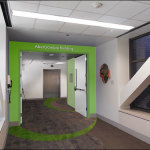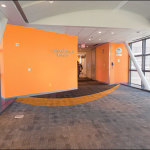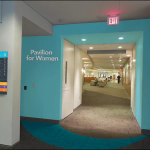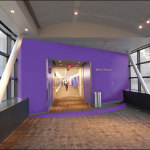 What happens when Texas Children’s surgeons and Rice University engineering students collaborate to develop innovative solutions to reduce the pain of stent removal after a urinary tract procedure? An award-winning device that could potentially revolutionize the field of pediatric urologic surgery.
What happens when Texas Children’s surgeons and Rice University engineering students collaborate to develop innovative solutions to reduce the pain of stent removal after a urinary tract procedure? An award-winning device that could potentially revolutionize the field of pediatric urologic surgery.
Last fall, Dr. Chester Koh, a pediatric urologist and surgeon at Texas Children’s and Baylor College of Medicine, challenged a group of Rice students to come up with an innovative tool to simplify ureteral stent removals, a fairly common procedure that is performed on more than 2,000 pediatric patients nationwide each year.
After a stent is inserted into a patient’s ureter to improve urine flow from the kidneys to the bladder, the stent is removed after four weeks of healing. The current procedure involves inserting an endoscope into the urethra and bladder to locate the stent and pull it out, which requires children to be placed under anesthesia.
After extensively collaborating with Texas Children’s surgeons to better understand the challenges of the current procedure and the need for refinement, the Rice team developed a simple, less invasive device to remove ureteral stents from children using a small magnetic bead and a powerful custom-built electromagnet the team designed and 3-D printed at Rice’s Oshman Engineering Design Kitchen. The tiny metallic bead can pass safely through the urethra as the magnet pulls the bead out of the body followed by the stent that the bead is attached to.
Rice students briefly considered designing a stent that would dissolve over time, but decided the magnetic attachment would be far simpler and less prone to complications. This new innovation in ureteral stent removal in children is less painful and costs two-thirds less than the standard procedure because it does not require anesthesia and it can be completed in minutes rather than hours.
The team’s invention, the Ureteral Stent Electromagnetic Removable Bead, won two significant awards this month: the top $5,000 prize at Rice University’s annual Engineering Design Showcase and the Grand Prize for student design at the annual Design of Medical Devices Conference in Minneapolis.
“We hope this device will transform the field of pediatric urologic surgery,” said Rice bioengineering student Eric Yin, who is considering applying his engineering expertise to a career in pediatric medicine. “A lot of devices are designed for adults and Dr. Koh is one of the movers trying to develop more devices that are designed for children.”
Koh says the Rice team’s new device – and others designed in partnership with Texas Children’s surgeons – address the severe shortage of medical devices designed for infants and children.
“The development of pediatric medical devices lag adult device development by more than 10 years,” said Koh, who has a mechanical engineering degree from the University of California, Berkeley. “This is an important example of why academic partnerships are needed to advance pediatric medical device projects, since the pediatric medical device pipeline is currently limited. I applaud the Rice team for showing its dedication and passion to the kids under our care at Texas Children’s.”
Prior to coming to Texas Children’s to establish the robotic surgery program in 2013, Koh co-founded a U.S. Food and Drug Administration-supported pediatric device consortium based in Southern California. He is creating a similar initiative at Texas Children’s, drawing on the top engineering talent in the region.
This year, three engineering teams from Rice University and six teams from Texas A&M University are collaborating with Texas Children’s surgeons to develop new pediatric medical devices. with support from the Texas Children’s Auxiliary Denton Cooley Innovation Award. Koh plans to collaborate with other institutions in the future.









